In their marketing Hyundai Australia promises that all versions of the Ioniq 6 2023 electric car are capable of Three Phase 10.5kW maximum AC charging rate.
At home using a single phase 7kW charger the promised charging time from 10% to 100% is 11hrs 45min hours for the Hyundai Ioniq 6.
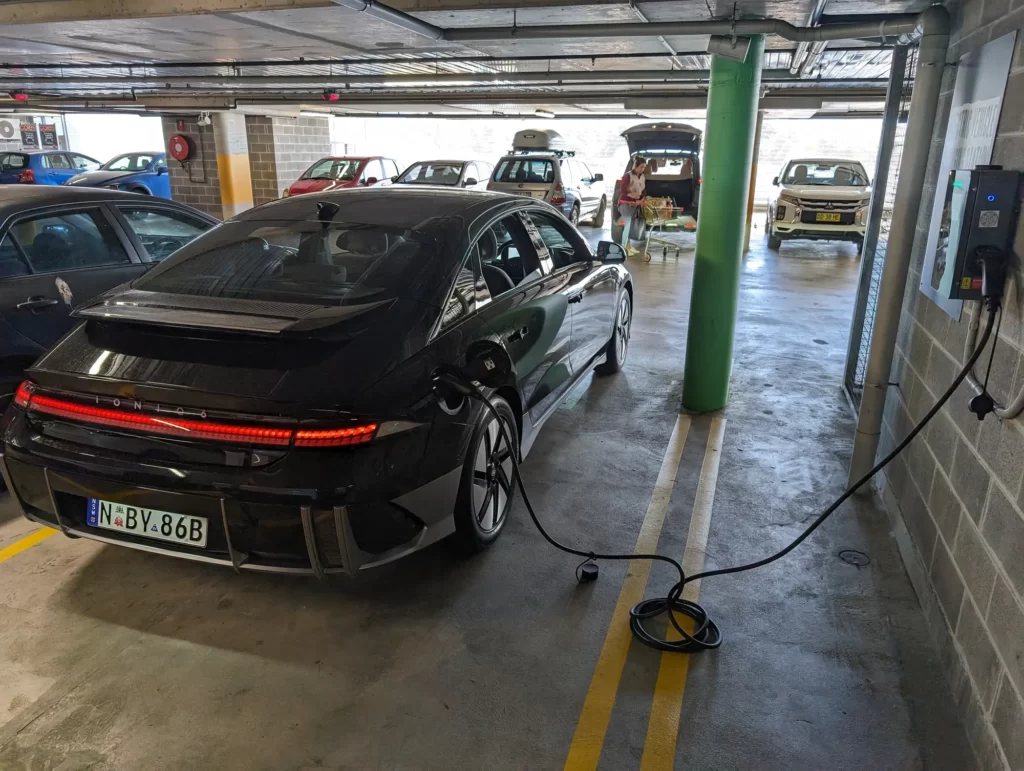
I tested the charging rate at my local shopping centre Ocular AC charging station, using my 7m Type 2 to Type 2 EV Charging Cable (22kW, 32 amp) cable and a Ioniq 6 Dynamiq 2023 RWD (which I had on loan for a week to review).

I plugged one end of the cable into the car charger port.
I plugged the other end of the cable into the Ocular brand AC charging station.
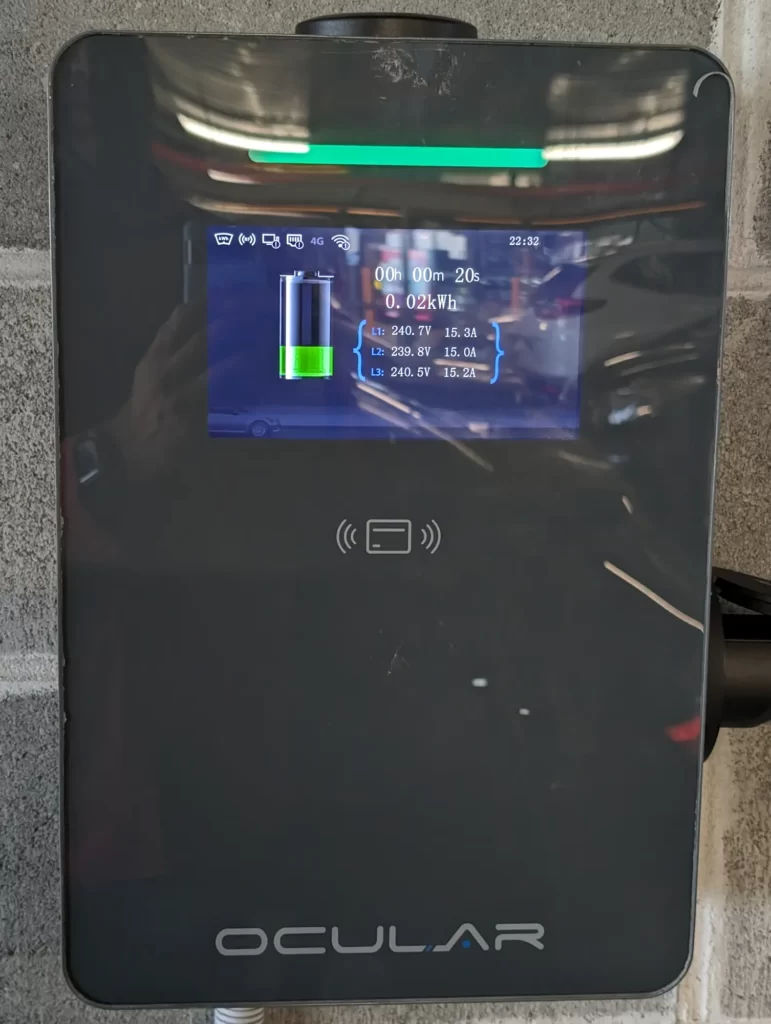
After a few seconds charging started and I saw that the Ioniq 6 was charging.
You can tell the Ioniq 6 has an onboard Three Phase AC charger because the Ocular display shown below all 3 phases with roughly 240V and about 16 amps.
The driver information cluster screen displays key information about AC charging rate, current battery level and how long it will take to reach 100%.

By the time I returned from a quick shopping trip the total amount sent to the battery was 6.55kWh in 35min 12 seconds, which is roughly 11.22kW/hr.
An EV only capable of 6.6kW or 7kW AC single phase charging would have taken about 60 minutes to receive the same amount of kW from the same AC charging unit.
The charge rate displayed in the Ioniq 6 fluctuated between 11.2-11.4kW/hr which is better than the promised 10.5kW.

When I pressed stop the battery was 99% full and the range was 622km in ECO mode (which is what I tested the car in most of the time).
The advertised WLTP mixed urban and motorway range for the Ioniq 6 Dynamiq RWD is 614km.
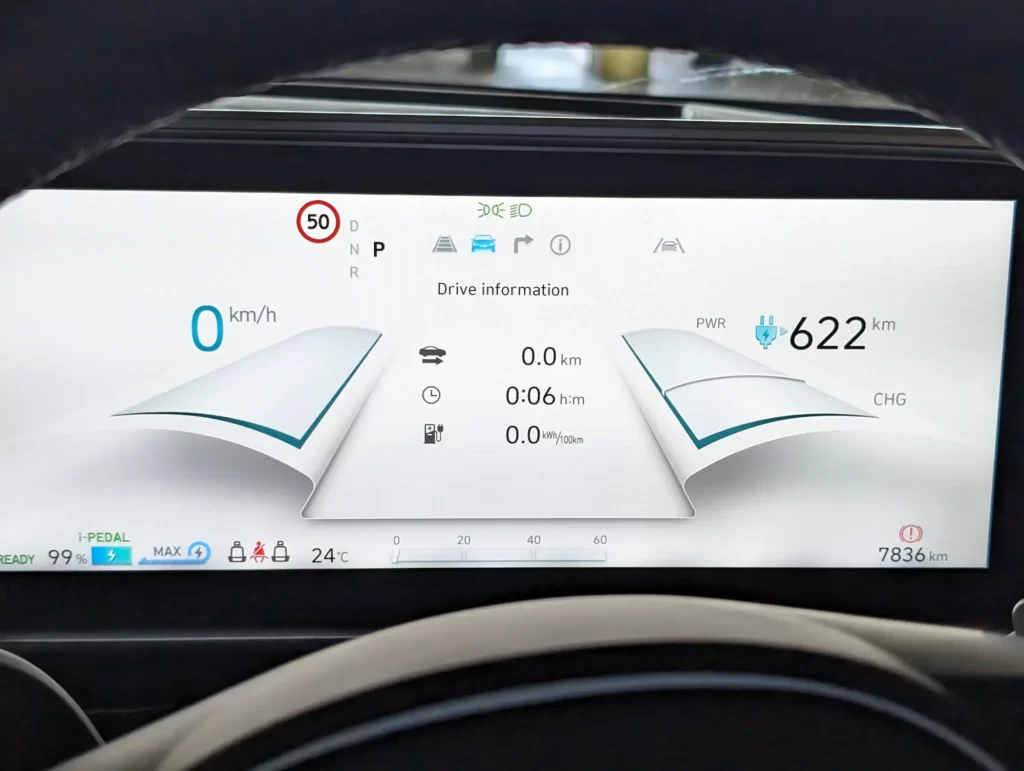
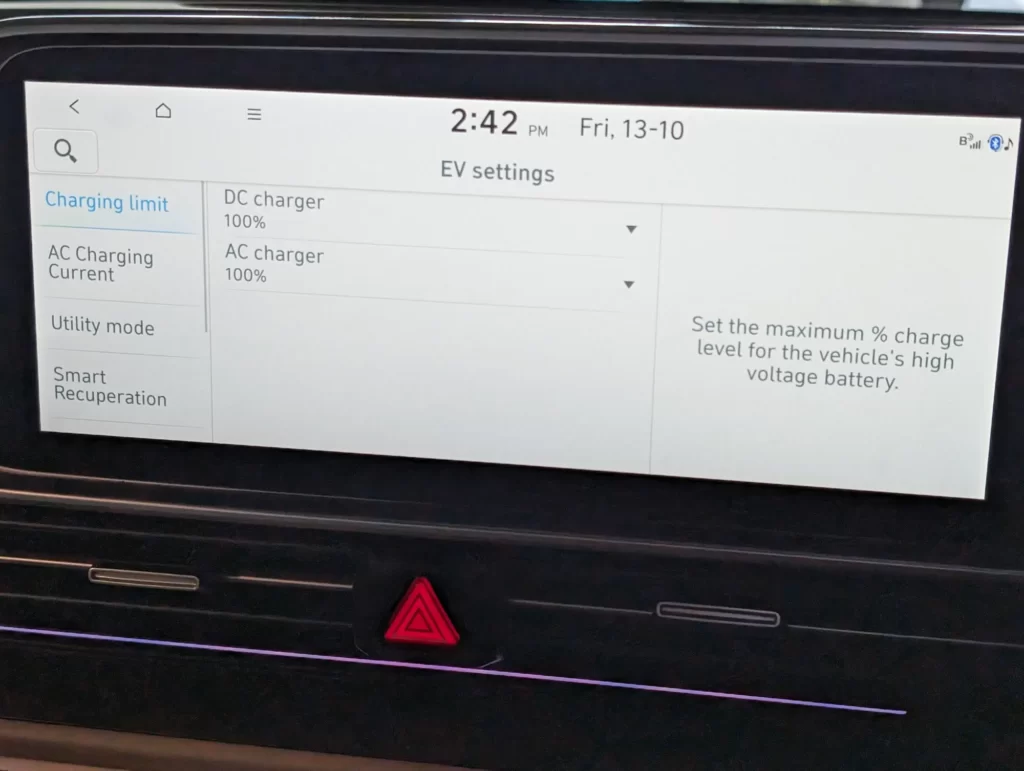

As you can see above, the Ioniq 6 allows you to choose the maximum percentage AC and DC charge limit in the car settings. AC maximum can be 60%, 90% or 100%.
As a side note one common question about the Australian Ioniq 6 Dynamiq RWD 2023 is can you can set the maximum charge percentage level using an app?
As shown below you can set maximum battery level for the Ioniq 6 in the Hyundai Bluelink Australia mobile app as well as viewing the current battery percentage level and estimated range.
The Bluelink app also lets you start/stop charging remotely, schedule charging, schedule climate control and a lot more.
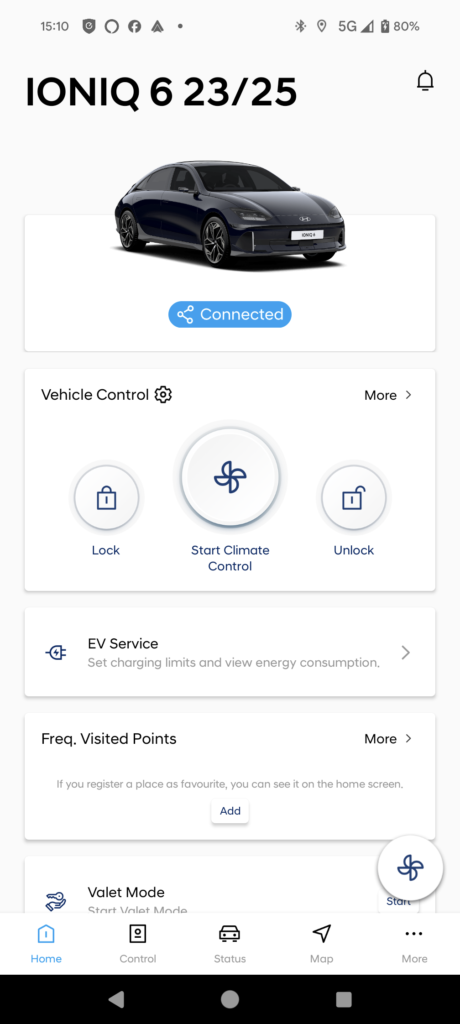
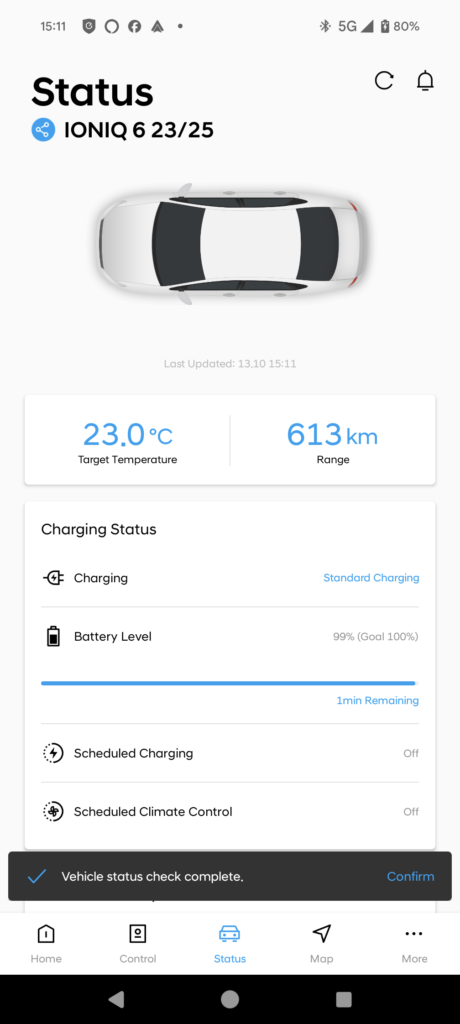
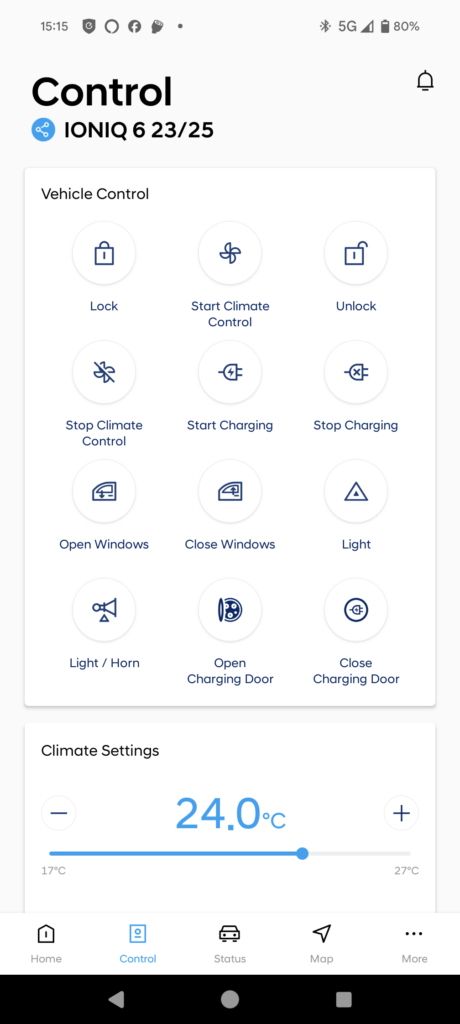
Type 2 to Type 2 Cable Buying Tips
I recommend buying your Type 2 to Type 2 cable from an Australian retailer like EVSE or Jetcharge so you have a good warranty and are supporting the local EV accessory industry.
You could get a shorter, cheaper 5m cable but I find the 7m length is handy as you never know how far the charging station will be from your car charging port.
Some electric vehicle (EV) owners buy a Type 2 to Type 2 EV Charging Cable (7kW, 32amp) to save a little bit of money.
This is a slower slightly cheaper cable available for purchase for cars like the BYD Atto 3, MG ZS EV 2021, MG4 Excite 2023 and Hyundai Kona EV 2021 that don’t support 11kW AC charging.
However if you later buy a newer electric car that is capable of 11kW AC charge rate or rent an EV capable of 11kW AC charge rate (eg common rental models Tesla Model 3 and Polestar 2) then this wastes an opportunity to charge that EV much faster at an AC charging station.

Leave a Reply